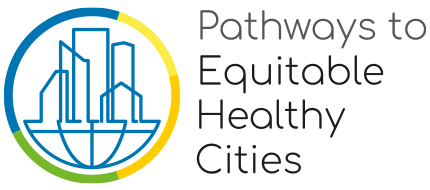London
Work in London is led by Pathways consortium members from Imperial College and involves collaborations with other partner institutions. We work with partners from local and national government agencies and civil society organisations to look at different aspects of inequalities and to identify areas of contemporary and emerging policy interest.
Health inequalities in the UK are receiving renewed attention by the public and governments. London is an epicentre of inequality in the UK, with wealthy and poor living in close distances. There is an absence of consistent, very-high-resolution trend data on mortality in the capital, limiting our ability to target policies and programmes for addressing health.
We are investigating mortality for thousands of small areas in London. Firstly, we aim to quantify local differences in life expectancy and then we will extend the analysis to specific diseases. Throughout, we will use our mortality estimates to explore the effects of deprivation, housing and other social and environmental determinants, and policies that influence them, on health outcomes in the city.
Check our interactive map on life expectancy in 6,791 communities in England.
Read more about the work of the Pathways Health Outcomes working group.
The cost of housing affects where people can afford to live, the size and quality of homes they live in, and how much they can spend on other determinants of health. Yet data on housing cost and quality are rarely available at high resolution. With London and its local authorities focusing on affordable housing and housing cost, this limits our ability to understand how new policies may affect health and health inequalities. We are estimating the cost of housing and hence affordability at as small an area as possible in London, and how this has changed over time. We will start with house purchase price data, before analysing the rental market. We have also combined data from multiple sources to understand housing quality for small areas in London and its effects on health inequalities.
Read more about the work of the Pathways Housing and Neighbourhood working group.
The health of London residents changes substantially due to the stark variations in living conditions in different parts of the city. We are working to characterise the multi-dimensional features of the neighbourhood using data from surveys and imagery, and looking at the physical, natural and social determinants of health and how people interact with their environments.
Our work is focusing initially on school-aged children and adolescents’ health and well-being in London. We are studying children’s experience of open and green spaces, air and noise pollution, fast food and gambling outlets at school and during home-to-school commute. These data will be used to evaluate the impact of policy scenarios that help create healthier community environments in a more complete and holistic way reducing emissions, increasing green space, and encouraging active transportation.
Specific components of this work include children’s access to green spaces and play both in parks and at school. We have quantified access to open space and green space at schools in London to investigate if children have enough space to play at school or in public parks near the school. We have also characterised availability and accessibility of public parks surrounding homes in major cities in England and Wales, highlighting the difficult balance between outdoor activity and recreation and social distancing in the age of the Covid-19 pandemic.
Check our interactive map on school open and green spaces and on green space availability and capacity in urban areas of England and Wales.
We are also mapping pedestrian safety in the Greater London Area. Our aim is to quantify features related to pedestrian infrastructure, traffic and social environment to measure and map safety levels across London and identify how and where walking safety can be improved.
Finally, we are using Google StreetView and satellite images to analyse visual features of the urban environment and quantify spatial inequalities across the entirety of London. We employ techniques of image matching from computer vision and clustering for high dimensional datasets to characterise the city at a high spatial resolution.
Read more about the work of the Pathways Big Data working group and Housing and Neighbourhood working group.
We are working on broadening definitions of access to services and the links with inequalities in mobility. Specifically, the current dominant approach to measuring access to services is zonal, for example distance from home. We are working to shrink the spatial scale to specific residential locations, looking within these zones, and include demographic characteristics (e.g., age and gender) and mode of transportation, as well as other determinants of use and non-use of services (e.g., hours of opening and possibly quality). In this way, we can quantify the impacts of specific policies related to the housing-transport-services nexus on population subgroups.
Check our interactive map on access to primary education.
Read more about the work of the Pathways Transport and Mobility working group.
Related publications
The Lancet Oncology, vol. 25, iss. 1, pp. 86-98, 2024.
Health & Place, vol. 83, pp. 103081, 2023.
EPJ Data Science, vol. 12, iss. 1, pp. 19, 2023.
The Lancet Regional Health - Europe, vol. 27, pp. 100580, 2023.
Predicting air pollution spatial variation with street-level imagery
Remote Sensing, vol. 14, iss. 14, pp. 3429, 2022.
